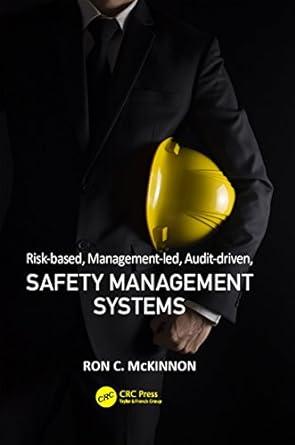
Simmmary: The government has decided to allocate a valley of the province to forestry and must decide on the optimal timber extraction method. Only two methods have initially been selected for consideration. Thanks to a recommendation from your former REM 321 professor, the government has hired your consulting company to evaluate the alternative methods using standard discounted cash flow analysis (the investment will be made by the government). For each analysis, use the data provided-i.e. do not make up your own data! The government's time horizon is 20 years and the real social discount rate (there is no inflation) is 8%. All costs and revenues are incurred on the last day of the year for which they are stated. In other words, a cost incurred in Year 1 will take place on the last day of that year-the cost still needs to be discounted by one year to calculate the present value. All of the methods listed below represent alternative, mutually exclusive uses of one unique piece of land. Details of the first two methods under consideration are as follows. - Method 1: Years 1 and 2 will each require investments of $18 million; there will be no further investment in subsequent years. Annual output will be 160,000m3 beginning in year 3 and remaining constant right up to the end of year 20. Operating cost is estimated to be $25/m3 and sale price is estimated at $90/m3. Operating costs are a function of output and are projected to remain constant in real terms throughout the 20-year horizon. Method 2: The same as Method 1 except that the investment is only $12 million in year 1 and 2, while operating costs are higher at $50/m3. Your memoshould clearlv answer all 6 auestions below (\% of overallorade is indicated in brackets): 1. Calculate NPV and the B/C ratio for Methods 1 and 2(3%). Use a table to summarize your results. Briefly explain your working steps used for arriving at your answer ( 3%). Given these results, which method would you recommend (3\%)? Justify your recommendation, as if explaining to a non-technically oriented policymaker, briefly describing the analysis you used and how did it lead you to your recommendation (6\%). (15\% total) 2. A new study indicates that Method 1 will have a negative impact on the valley's ecosystem services. These external environmental costs are estimated to be $26/m3 annually (starting from year 3). Internalize these costs for Method 1 (for this question only) and recalculate, explaining your working steps (10\%). What method do you recommend now, and why? (5\%) (15\% total) Simmmary: The government has decided to allocate a valley of the province to forestry and must decide on the optimal timber extraction method. Only two methods have initially been selected for consideration. Thanks to a recommendation from your former REM 321 professor, the government has hired your consulting company to evaluate the alternative methods using standard discounted cash flow analysis (the investment will be made by the government). For each analysis, use the data provided-i.e. do not make up your own data! The government's time horizon is 20 years and the real social discount rate (there is no inflation) is 8%. All costs and revenues are incurred on the last day of the year for which they are stated. In other words, a cost incurred in Year 1 will take place on the last day of that year-the cost still needs to be discounted by one year to calculate the present value. All of the methods listed below represent alternative, mutually exclusive uses of one unique piece of land. Details of the first two methods under consideration are as follows. - Method 1: Years 1 and 2 will each require investments of $18 million; there will be no further investment in subsequent years. Annual output will be 160,000m3 beginning in year 3 and remaining constant right up to the end of year 20. Operating cost is estimated to be $25/m3 and sale price is estimated at $90/m3. Operating costs are a function of output and are projected to remain constant in real terms throughout the 20-year horizon. Method 2: The same as Method 1 except that the investment is only $12 million in year 1 and 2, while operating costs are higher at $50/m3. Your memoshould clearlv answer all 6 auestions below (\% of overallorade is indicated in brackets): 1. Calculate NPV and the B/C ratio for Methods 1 and 2(3%). Use a table to summarize your results. Briefly explain your working steps used for arriving at your answer ( 3%). Given these results, which method would you recommend (3\%)? Justify your recommendation, as if explaining to a non-technically oriented policymaker, briefly describing the analysis you used and how did it lead you to your recommendation (6\%). (15\% total) 2. A new study indicates that Method 1 will have a negative impact on the valley's ecosystem services. These external environmental costs are estimated to be $26/m3 annually (starting from year 3). Internalize these costs for Method 1 (for this question only) and recalculate, explaining your working steps (10\%). What method do you recommend now, and why? (5\%) (15\% total)







